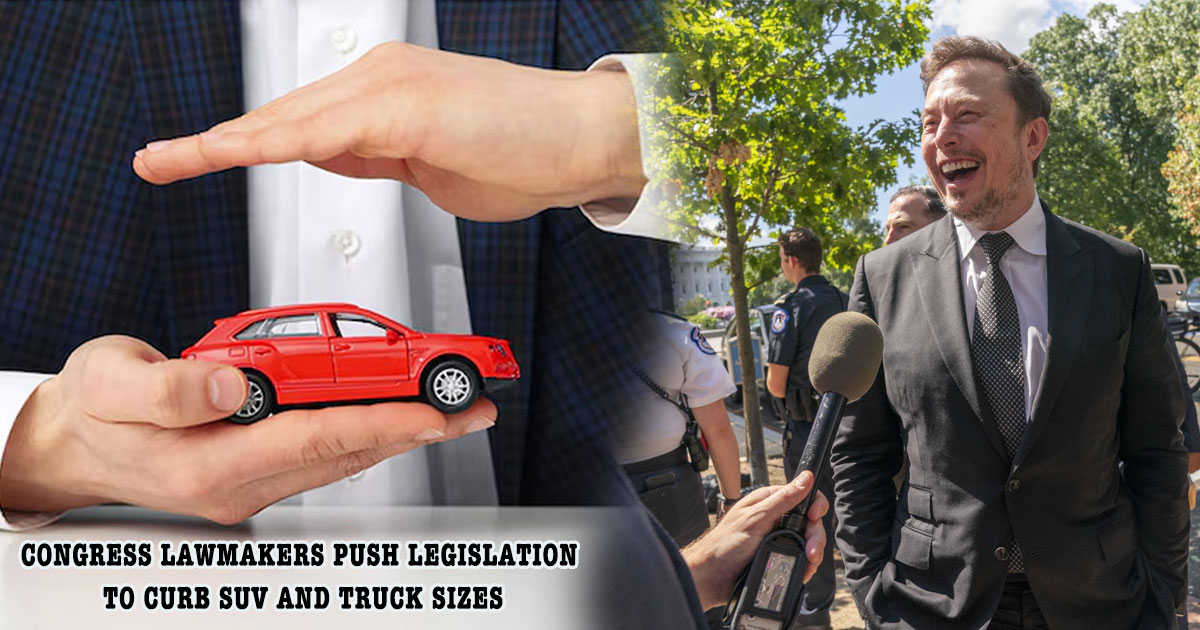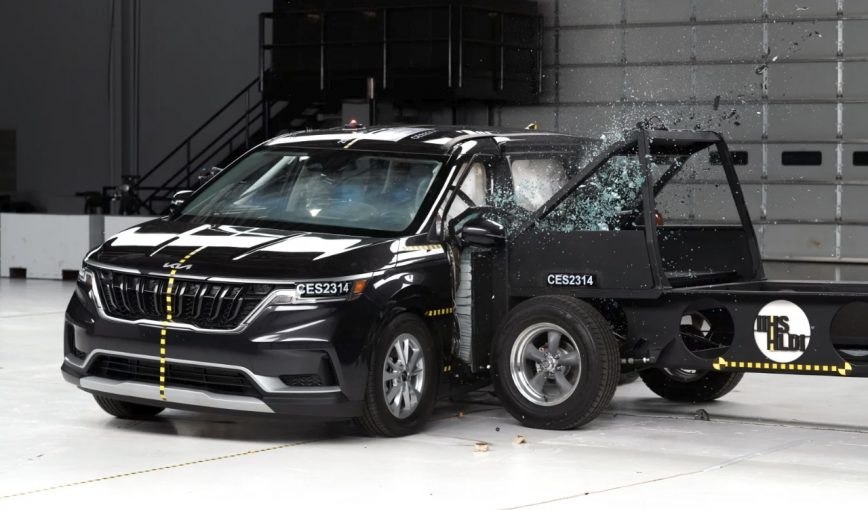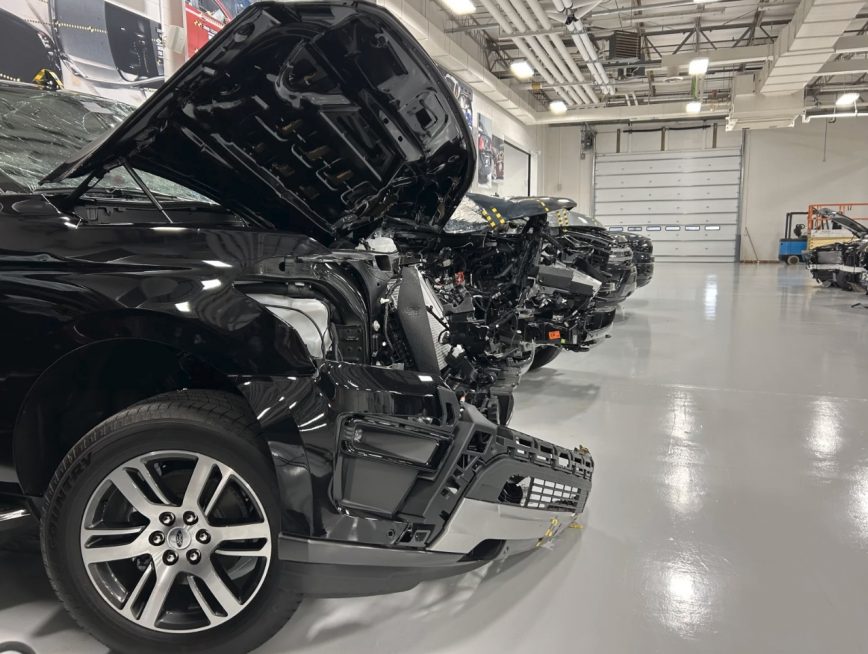Congress Proposes New Standards for SUV and Truck Sizes

New Legislation Aims to Rein in SUV and Truck Sizes
The Push to Limit the Size of SUVs and Trucks
In response to a disturbing rise in pedestrian fatalities, Congress has introduced a new bill aiming to curb the size of SUVs and trucks on American roads. Over the past decade, the size and weight of vehicles in the U.S. have skyrocketed, creating a direct correlation with the increase in pedestrian and cyclist deaths. The bill, known as the Pedestrian Safety Act, seeks to establish federal standards for vehicle height and visibility to protect vulnerable road users.

Rising Vehicle Sizes and Pedestrian Deaths: A Dangerous Trend
Over the past ten years, the average passenger vehicle in the U.S. has grown significantly. SUVs and trucks have become longer, taller, and heavier, with the average vehicle length increasing by 10 inches and the height by 8 inches. This growth in size isn’t just a matter of aesthetics or personal preference—it’s a deadly trend that has resulted in a sharp increase in roadway fatalities, particularly among pedestrians and cyclists.

According to the Insurance Institute for Highway Safety (IIHS), larger vehicles, while offering increased safety for their occupants, pose a much greater risk to those outside the vehicle. The study highlighted that vehicles with higher front ends and blunt profiles are 45 percent more likely to cause fatalities in collisions with pedestrians than smaller cars and trucks. This alarming statistic has prompted lawmakers to take action.
The Pedestrian Safety Act: A New Approach to Road Safety
The Pedestrian Safety Act, introduced by Rep. Mary Gay Scanlon (D-Pa.) and co-sponsors, is a direct response to the increasing dangers posed by oversized vehicles. The bill calls for the National Highway Traffic Safety Administration (NHTSA) to establish federal standards for hood heights and visibility. These standards aim to protect pedestrians and other vulnerable road users from the deadly impact of large SUVs and trucks.
The legislation isn’t just about reducing vehicle size—it’s about creating a safer environment for everyone who shares the road. The Pedestrian Safety Act represents a significant shift in how vehicle safety is approached, focusing on the safety of those outside the vehicle, not just those inside.
Impact on Vehicle Manufacturers and Consumers
If the Pedestrian Safety Act is passed, it will have far-reaching implications for vehicle manufacturers and consumers alike. Automakers will be required to redesign their vehicles to meet the new federal standards, which could result in smaller, more compact SUVs and trucks on the market.
For consumers, this could mean a shift in purchasing trends. The popularity of large SUVs and trucks has been on the rise, but the new regulations could lead to increased demand for smaller, more fuel-efficient vehicles. Additionally, the bill could have a positive impact on the environment, as smaller vehicles typically produce fewer carbon emissions and cause less wear and tear on roads.
Challenges and Opposition to the New Legislation
While the Pedestrian Safety Act has garnered support from safety advocates and lawmakers, it is not without its challenges. The automotive industry has long resisted efforts to regulate vehicle size, arguing that consumers prefer larger vehicles for their perceived safety benefits and utility. Automakers may push back against the bill, citing the costs and logistical challenges of redesigning vehicles to meet the new standards.
Furthermore, the cultural preference for large vehicles in the U.S. could pose a significant hurdle. Many Americans view SUVs and trucks as symbols of power, status, and freedom, and convincing them to opt for smaller vehicles could be an uphill battle.
The Role of Infrastructure in Pedestrian Safety
In addition to regulating vehicle size, the Pedestrian Safety Act highlights the importance of infrastructure in improving road safety. Larger vehicles require more space to maneuver and park, and their increased weight contributes to the deterioration of roads and bridges. By limiting vehicle size, the bill could reduce the strain on infrastructure and lead to safer, more pedestrian-friendly urban environments.
Cities and states will also need to invest in better infrastructure to support the goals of the Pedestrian Safety Act. This includes designing streets that prioritize pedestrian safety, with features like wider sidewalks, better lighting, and clearly marked crosswalks. By addressing both vehicle design and infrastructure, the bill takes a comprehensive approach to reducing pedestrian deaths.
A Step Towards a Safer Future
The introduction of the Pedestrian Safety Act marks a crucial step towards making American roads safer for everyone. By setting federal standards for vehicle height and visibility, the bill aims to curb the alarming rise in pedestrian fatalities and create a safer environment for all road users.
As the bill moves through Congress, it will likely face opposition from the automotive industry and cultural resistance from consumers. However, the potential benefits of the legislation—fewer pedestrian deaths, reduced environmental impact, and safer urban environments—make it a vital piece of legislation in the ongoing effort to improve road safety.
Looking Ahead: The Future of Vehicle Design
The Pedestrian Safety Act could signal a shift in the future of vehicle design. As automakers adapt to the new regulations, we could see the emergence of a new generation of vehicles that prioritize safety for all road users, not just those behind the wheel. This shift could lead to more innovative designs that balance the need for utility with the imperative of safety.
In the long term, the Pedestrian Safety Act could pave the way for a more sustainable and equitable transportation system. By reducing the size and weight of vehicles, we can create a more balanced and safer environment for everyone who shares the road.
Conclusion: A New Era in Road Safety
The Pedestrian Safety Act represents a bold and necessary step towards addressing the dangers posed by oversized vehicles on American roads. By introducing federal standards for vehicle size and visibility, Congress is taking action to protect pedestrians, cyclists, and other vulnerable road users from the deadly consequences of the ever-growing SUV and truck sizes.
As the bill moves forward, it will undoubtedly spark debate and face challenges from various quarters. However, the potential benefits—saving lives, reducing environmental impact, and improving infrastructure—make it a critical piece of legislation for the future of road safety in the United States. Photo Credit – (AP Photo/Jacquelyn Martin) Follow on Instagram

